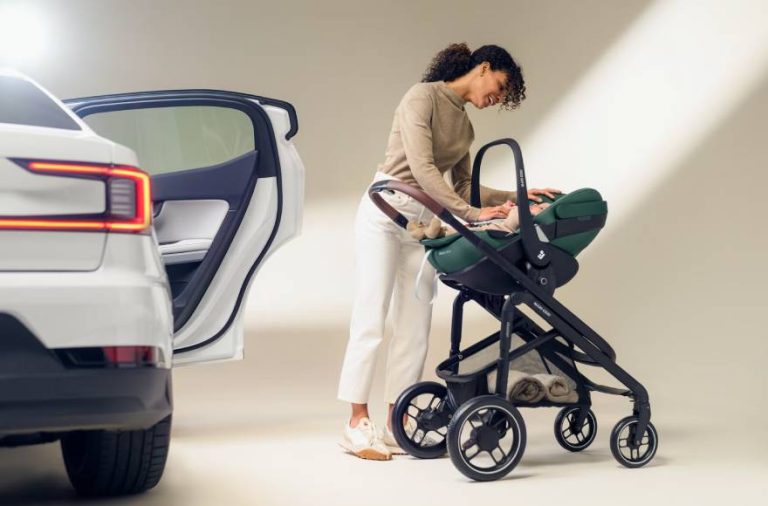Bassinet Stroller: Until What Age Is It Safe?
Discovering the perfect bassinet stroller for your little one is just the beginning of your parenting journey.
As your baby grows, the question of when to transition from the cozy bassinet to a crib may arise.
Let’s delve into this crucial topic to ensure your baby’s safety and comfort.
bassinet stroller until what age
Most experts recommend transitioning from a bassinet to a crib by 4-6 months of age due to safety and comfort concerns.
Babies should move to the crib when they start rolling, sitting up, or showing signs of increased mobility that could pose a risk in the bassinet.
It is crucial to ensure that the transition is made in a safe and smooth manner, with tips such as encouraging playtime in the crib, maintaining a consistent bedtime routine, and following AAP guidelines for safe sleep practices.
Key Points:
- Transition from bassinet to crib recommended by experts by 4-6 months
- Move to crib when baby starts rolling, sitting up, or showing signs of increased mobility
- Ensure safe and smooth transition with tips like encouraging playtime in the crib
- Maintain consistent bedtime routine during transition
- Follow AAP guidelines for safe sleep practices
- Transition is crucial for safety and comfort of the baby
Check this out:
💡 Did You Know?
1. The bassinet attachment in a stroller is typically designed for infants up to around 6 months of age, as it provides a flat and secure surface for newborns to lie on comfortably.
2. Bassinet strollers are also known as prams in some regions, particularly in the UK and Australia.
3. The bassinet attachment in a stroller is often detachable and can be used as a portable bed for the baby when not on the stroller.
4. Some bassinet strollers come with adjustable canopies to provide shade and protection for the baby against the sun and other elements.
5. Bassinet strollers are a popular choice for parents who prefer a more traditional and luxurious look for their baby’s transportation, as they often feature high-quality fabrics and materials.
Introduction Of Crib While Using Bassinet
- Introduce the crib early on: When transitioning a baby from a bassinet to a crib, it is crucial to introduce the crib early on, even if the baby is still using the bassinet.
- Make the crib available in the nursery: Assembling the crib and placing it in the nursery allows the baby to familiarize themselves with the new sleeping environment gradually.
- Smooth transition to the crib: This gradual introduction of the crib can make the transition smoother when the baby is ready to fully utilize the crib for sleep.
- Ease the shift: While the bassinet may still be in use at the beginning, having the crib present can help ease the eventual shift to the new sleeping arrangement.
Transition Timing Recommendations
- The transition from a bassinet to a crib is recommended to occur between 4-6 months of age.
- This timing is important due to safety and comfort concerns as the baby grows and becomes more mobile.
- By 4-6 months, many babies start rolling, sitting up, or showing signs of increased movement that could pose a risk in the confined space of a bassinet.
- Moving to a crib at this age ensures that the baby has a safe and comfortable sleep space that accommodates their development.
Signs For Moving Baby To Crib
- Signs to observe that indicate it’s time to move the baby from the bassinet to the crib:
- Baby starts rolling, sitting up, or displaying increased mobility.
- Potential danger in bassinet due to increased mobility.
- Baby seems cramped, uncomfortable, or restless.
- Transitioning to the crib:
- Provides larger sleeping space and freedom of movement.
- Paying attention to these cues ensures a smooth and timely transition for the baby.
Tips For Transitioning To Crib
Transitioning a baby from a bassinet to a crib can be a gradual process with key strategies to ensure a smoother adjustment:
- Encourage playtime in the crib
- Create a positive and calming atmosphere in the nursery
- Be patient with the baby’s adaptation to the new sleeping space
- Maintain a consistent bedtime routine
- Give the baby practice falling asleep in the crib
- Start with an “easy” sleep time to establish a positive association with the new sleeping environment
Remember to take these steps slowly and consistently to help your baby transition comfortably.
Note: It’s important to consult with your pediatrician for personalized guidance.
Gradual Method Transitioning
- One approach to transitioning a baby to a crib is the gradual method, which involves starting with one sleep period in the crib per day and gradually increasing crib usage. This method allows the baby to become accustomed to sleeping in the crib slowly and comfortably. By gradually increasing the time spent in the crib each day, the baby can adjust to the new sleeping arrangement without feeling overwhelmed or anxious.
Faster Transitioning Method
- The faster method of transitioning to the crib involves starting with bedtime in the crib followed by all sleep periods.
- This method may be quicker but can be more challenging for some babies who may struggle with the sudden change.
- It is essential to remain patient and understanding during this transition as each baby will adapt at their own pace.
Importance Of Consistent Bedtime Routine
Consistent bedtime routines are crucial for babies as they provide a sense of security and predictability, which promote healthy sleep habits.
Establishing a consistent routine that includes activities like:
- a warm bath,
- lullabies, and
- reading bedtime stories
can help signal to the baby that it is time for sleep. Following the same routine each night can help babies know what to expect and make the transition to the crib smoother.
Tip:
Creating a soothing bedtime routine can significantly improve your baby’s sleep patterns and overall well-being.
Safety Recommendations For Bassinet And Crib Use
Whether using a bassinet or a crib, it is essential to ensure that the baby’s sleeping environment meets safety recommendations. The American Academy of Pediatrics (AAP) recommends always placing a baby on their back to sleep to reduce the risk of sleep-related death. Additionally, the AAP advises using a firm, flat surface without soft objects or loose bedding in the sleeping area. It is crucial to adhere to the safety requirements set by the Consumer Product Safety Commission (CPSC) for both bassinets and cribs to ensure the baby’s safety during sleep.
Tip: Follow these guidelines to create a safe sleeping environment for your baby:
- Always place the baby on their back to sleep.
- Use a firm, flat surface without soft objects or loose bedding.
- Adhere to safety requirements from the CPSC for bassinets and cribs.
FAQ
How long does a baby use a bassinet stroller?
A baby typically uses a bassinet stroller until reaching 6 months of age, as most infants grow beyond the weight limit of 20 lbs or develop the ability to roll over or push up around this time. Once the child hits these milestones, it’s recommended to transition to a more suitable stroller that meets their developmental needs and ensures safety and comfort during outings. This age range allows for a secure and cozy environment for the baby while providing convenience for parents moving around with their little ones.
What age do you switch from bassinet stroller?
Typically, babies are ready to switch from a bassinet stroller to a seat stroller when they are between 4 to 6 months old. This is the stage when most babies have developed the necessary strength and control to hold their head up and maintain a steady head position. These motor skills are important indicators of their readiness to transition to a seat stroller, providing them with a more upright and interactive experience while on the go.
At what age should baby be out of bassinet?
Most babies should transition from the cozy confines of the bassinet to the spacious crib between 4 to 6 months of age for a safe and comfortable sleep environment. Before making the switch, it’s important to refer to the safety guidelines provided by the bassinet manufacturer, taking into consideration your baby’s height, weight, and developmental stage. By ensuring a smooth transition at the appropriate time, you’ll provide your little one with a secure and conducive sleeping space as they continue to grow and explore their surroundings.
At what age can you put a baby in a regular stroller?
You can transition your baby to a regular stroller seat, starting in a reclined position, around three months old, once they can support their head. As they develop and can sit up on their own, usually between five and seven months, you can adjust the stroller seat to an upright position. This helps ensure your baby’s comfort and safety as they grow and become more active.

